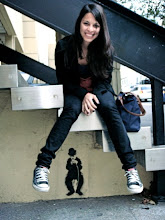"Garibaldi's Lovers" is a cute tale about relationships. Silvio Soldini intertwines five different lives into one story through odd encounters. You'll laugh watching this movie however, the story is not particularly clever or new. For instance, Alba Rohrwacher, who in numerous occasions has proven to be a very talented actress, in this film she seems forced to embody an italian version of Amelí. It is a pity to admit that she overacts and is not credible throughout most of the film.
Having said this, I loved the treatment of the image and the way Soldini gives life to un-animated things such as the statues and the stork. The camera moves slowly as a deep voiceover talks, giving the impression that Garibaldi's eyes are moving as he over-watches the city. Moreover, Soldini uses one of the oldest tricks in the box: Soviet montage theory. Therefore, depending on the intonation of the voice and what is spoken, the face of the statue seems to change expressions. In addition, he plays with over the shoulder shots giving the illusion that the statue is having a deep conversation with the stork. Given the fact that these scenes were done so impeccably well, it was very disappointing that the very last shot of the film is a low-budget special effect of a statue moving... This shot was plainly unnecessary and leaves you with a bad aftertaste once the film is over.
Another interesting point that this film makes is the treatment of death and ghosts. Soldini made Paradise sound just like another country which has a tyrannic government, hierarchy, protests, and even roommates. In addition, there are different states or paradises, depending on your religion and where you come from. According to Soldini, we never become equal, not even after our own death.


